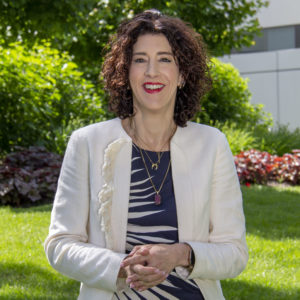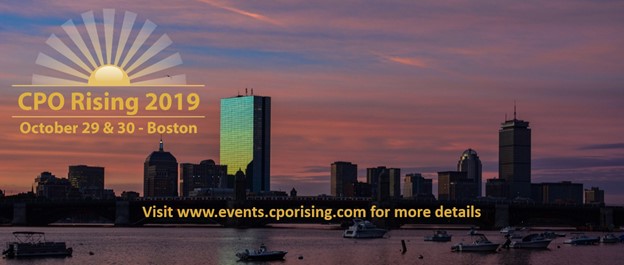Heidi Landry is the Vice President, Chief Procurement Officer (CPO) for Enterprise Supply Chain at Johnson & Johnson. She joined the company in January 2019 and is responsible for Procurement Enterprise Supply Chain Teams and reports into Len DeCandia, CPO for Johnson & Johnson. Heidi has nearly 30 years of experience in sourcing, procurement, and contract manufacturing with some of the world’s biggest, most recognizable household names. She has led procurement, strategic sourcing, and source-to-pay organizations for DowDuPont, the Dow Chemical Company, and the Dow Corning Corporation, including a seven-year stint as the latter’s CPO. Heidi has also spent more than half of her career living and working abroad for Kmart, IKEA, and Novartis, and witnessed first-hand the rise of outsourcing to China and India. She graduated summa cum laude from the University of Massachusetts-Amherst with a Bachelor of Arts in International Trade/Economics, has a degree in Mandarin Chinese from Beijing Normal University, and has completed graduate-level courses in finance and marketing at Harvard University’s Extension School.
is the Vice President, Chief Procurement Officer (CPO) for Enterprise Supply Chain at Johnson & Johnson. She joined the company in January 2019 and is responsible for Procurement Enterprise Supply Chain Teams and reports into Len DeCandia, CPO for Johnson & Johnson. Heidi has nearly 30 years of experience in sourcing, procurement, and contract manufacturing with some of the world’s biggest, most recognizable household names. She has led procurement, strategic sourcing, and source-to-pay organizations for DowDuPont, the Dow Chemical Company, and the Dow Corning Corporation, including a seven-year stint as the latter’s CPO. Heidi has also spent more than half of her career living and working abroad for Kmart, IKEA, and Novartis, and witnessed first-hand the rise of outsourcing to China and India. She graduated summa cum laude from the University of Massachusetts-Amherst with a Bachelor of Arts in International Trade/Economics, has a degree in Mandarin Chinese from Beijing Normal University, and has completed graduate-level courses in finance and marketing at Harvard University’s Extension School.
Heidi will deliver the first keynote presentation of CPO Rising 2019 on driving “Procurement with a Purpose” – on how the procurement function is uniquely positioned within many enterprises to drive positive social and environmental change across global supply chains. It’s a topic on which Heidi is well versed, having lived and worked abroad for so many years and having experienced globalization from both sides of the world. The following is a conversation between Heidi and Andrew Bartolini, in three parts, that has been edited for brevity and clarity.
Andrew Bartolini: Thanks for joining us, Heidi. Tell me a bit about your background – your early career and how you got into procurement.
Heidi Landry: I started in procurement a long time ago. In fact, it was 1989 when I started working for Kmart Corporation’s procurement organization based out of Hong Kong, in Kmart’s management trainee program. We rotated through all of the functions, so I spent a year as a quality control inspector, which is truly starting at Ground Zero in the organizational structure. Then I moved to become a merchandiser, followed by logistics, finance, and accounting assignments, over a two-year period. I was then moved to Shanghai to lead the team of sourcing operations there.
AB: Okay, and then you just sort of followed the career path that brought you to Europe and then back to the States, right?
HL: Yes, so I ended up spending seven years in China and I had already studied Chinese for a year at that point, so I spent two and a half years in Hong Kong, two and half years in Shanghai, and two years in Qingdao (which is between Shanghai and Beijing). I was then transferred to India to set up an office in Pune for IKEA, and then I worked two years in New Delhi leading IKEA’s South Asia procurement operations. From there I moved to Switzerland and led the procurement activities for Europe. And from there I moved to Novartis to lead their external manufacturing activities and then their pharmaceutical procurement for a number of years. I moved to Greece where I took a sabbatical – a prolonged maternity leave where I did some consulting. But then I was recruited to go back to the United States for a role with Dow Corning as the Vice President of Procurement & Logistics in August of 2009. I stayed there until 2016 when the company was acquired by Dow Chemical, and then joined what later became Dow DuPont as its Director for Strategic Sourcing for Raw Materials and External Packaging. I stayed in that position for nearly two years before being approached to join Johnson & Johnson.
AB: So, that’s fantastic international experience, which is I think something that is still pretty rare despite the global nature of the procurement function. It’s really something that in the 20 years I’ve been working in it, has really shifted, right? Manufacturing has moved away from the West and to the East and the South. Have you seen the maturation of procurement expertise and sophistication in Asia in the areas where you were living previously? I know you were still sourcing from those areas when you were at Dow Corning.
HL: I have seen of course a huge progression in the function. When I started in procurement, I started as a merchandiser in the so-called Top-Five Brands for women’s garments and we still used handmade sketches, to give you an idea. Orders were placed on paper. Now it seems somewhat remarkable that it was actually only 20-plus years ago, but that was the way it worked in those days. So obviously, our digital landscape has changed dramatically in that time period and the competencies we expect of procurement professionals have undergone a dramatic shift. Back when I started, negotiation expertise was valued in terms of how we were at getting the best value from suppliers, if you were a tough negotiator. Now I would say it it’s a very different set of capabilities that are expected of procurement professionals: certainly people expect you to have a global outlook, a broad understanding of market trends and market dynamics, that you’re abreast of developments that are happening in the digital economy, that you are at all savvy with data analytics, and overall have got very strong analytical capabilities. Category management has been a force through, at minimum, the past 15 years: the development of portfolios that balance cost with risk mitigation, the development of greater supply reliability, things of that nature. So, it’s a very different landscape, and looking back it’s amazing how simplistically we saw the work back when I started (or at least, I will say, I thought quite simplistically).
AB: Right, right. Yeah, so, obviously, if we’re talking pre-internet or pre-large file exchange and really pre-eSourcing, there were going to be communication limitations; and obviously that has greatly improved the ability to source from different parts of the world.
Join us next week as we pick up the conversation between Andrew and Heidi on the changing nature of global sourcing.
Tagged in: Ardent Team, Chief Procurement Officer, CPO, CPO Shop Talk, CPOs on the Rise, Events, Innovation, People, Sourcing, Suppliers, Technology










